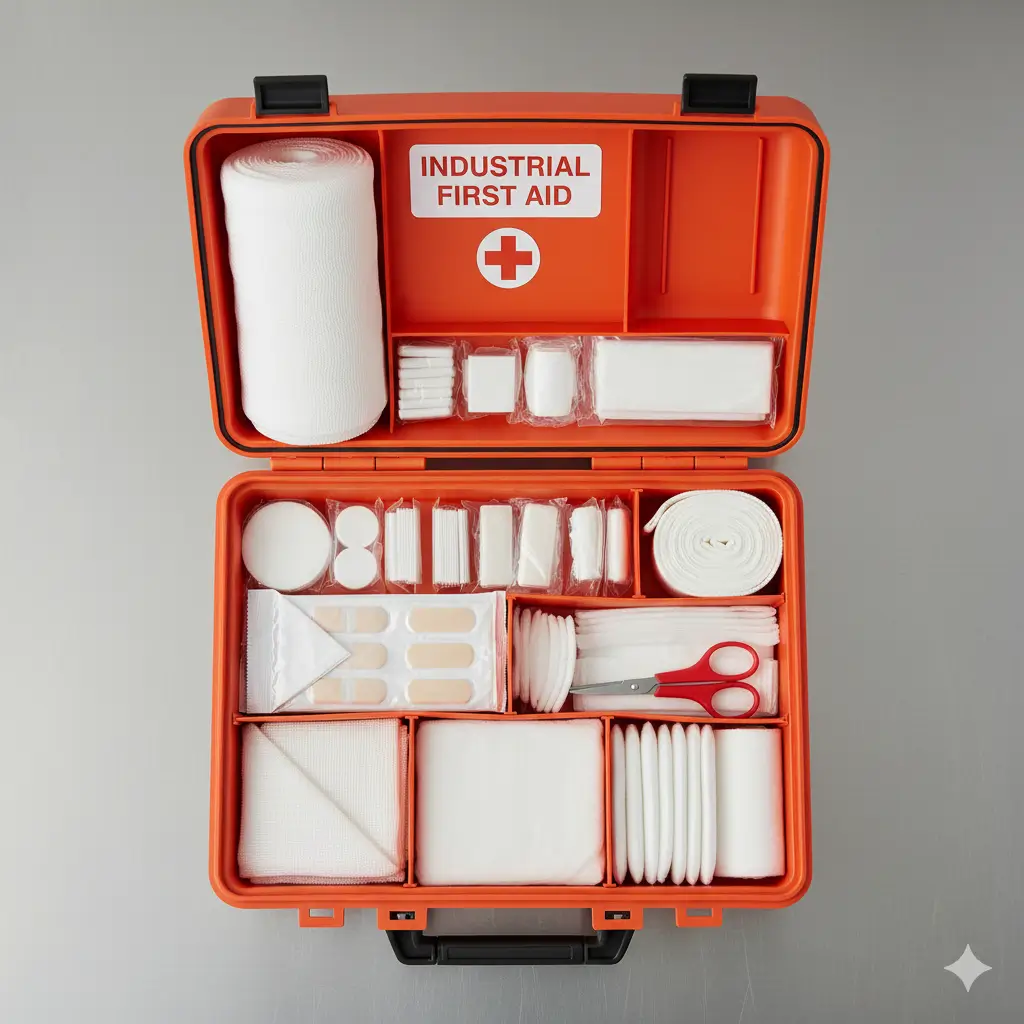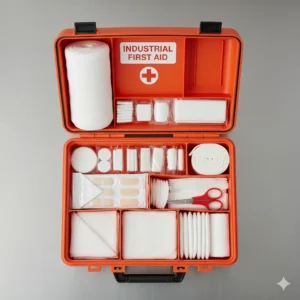Bandages are one of the most essential first aid items that manufacturers routinely stock to ensure workplace safety and compliance.
For industries in Malaysia where production floors, warehouses, and construction sites present daily risks, having the right bandages available is not just a precaution—it is a business necessity.
Key Takeaways (Q&A)
Q1: What is “12 Bandage Types That Manufacturers Routinely Stock for First Aid & Safety” and why does it matter?
A: This guide explains 12 types of bandages that manufacturers typically procure for workplace safety. For Malaysian businesses, stocking proper bandages ensures compliance, reduces downtime, and safeguards employees in industrial environments.
Q2: How does it work / what’s the fast answer?
A: Bandages work by protecting wounds, controlling bleeding, and stabilizing injuries. Manufacturers choose from gauze, adhesive, compression, and specialized bandages based on workplace risks, durability needs, and safety regulations.
Q3: What should the reader do next?
A: Businesses should review which bandages fit their industry risks, update first aid kits, and explore certified suppliers for industrial first aid kit supplies to maintain a safe, regulation-ready workplace.
Manufacturers understand that injuries such as cuts, abrasions, burns, and sprains can happen unexpectedly, and the speed of response often determines recovery outcomes.
Stocking an effective mix of bandages—from simple adhesive strips to specialized compression and hydrocolloid types—ensures workers receive immediate care while minimizing downtime.
This practice also aligns with Malaysian workplace safety regulations, where employers are expected to provide adequate first aid supplies as part of their duty of care.
Kelas Bina Website
Pembinaan laman web SEO-friendly oleh guru berpengalaman 15 tahun. Dapatkan hosting, domain, dan plugin pembina laman percuma bersama kami.

Beyond compliance, well-stocked first aid kits carry real economic value. A minor injury treated quickly with the correct bandage can prevent more severe complications, reducing the likelihood of medical claims or prolonged absences.
For business leaders, this translates into better productivity, improved employee morale, and stronger trust between management and workforce.
The global first aid market is also evolving with innovative bandages that offer antibacterial properties, waterproof resilience, and faster healing capabilities.
Malaysian manufacturers, start-ups, and even digital entrepreneurs exploring occupational health solutions can learn from these trends to strengthen both safety practices and brand credibility.
By proactively investing in industrial first aid kit supplies, companies position themselves as responsible employers that value worker welfare while optimizing operational efficiency.
In this article, we will explore 12 types of bandages most commonly purchased by manufacturers. Each type serves a unique function, from controlling bleeding to immobilizing injuries, and understanding their uses can help businesses make smarter procurement decisions.
What Are the Most Common Bandages Manufacturers Stock for First Aid?
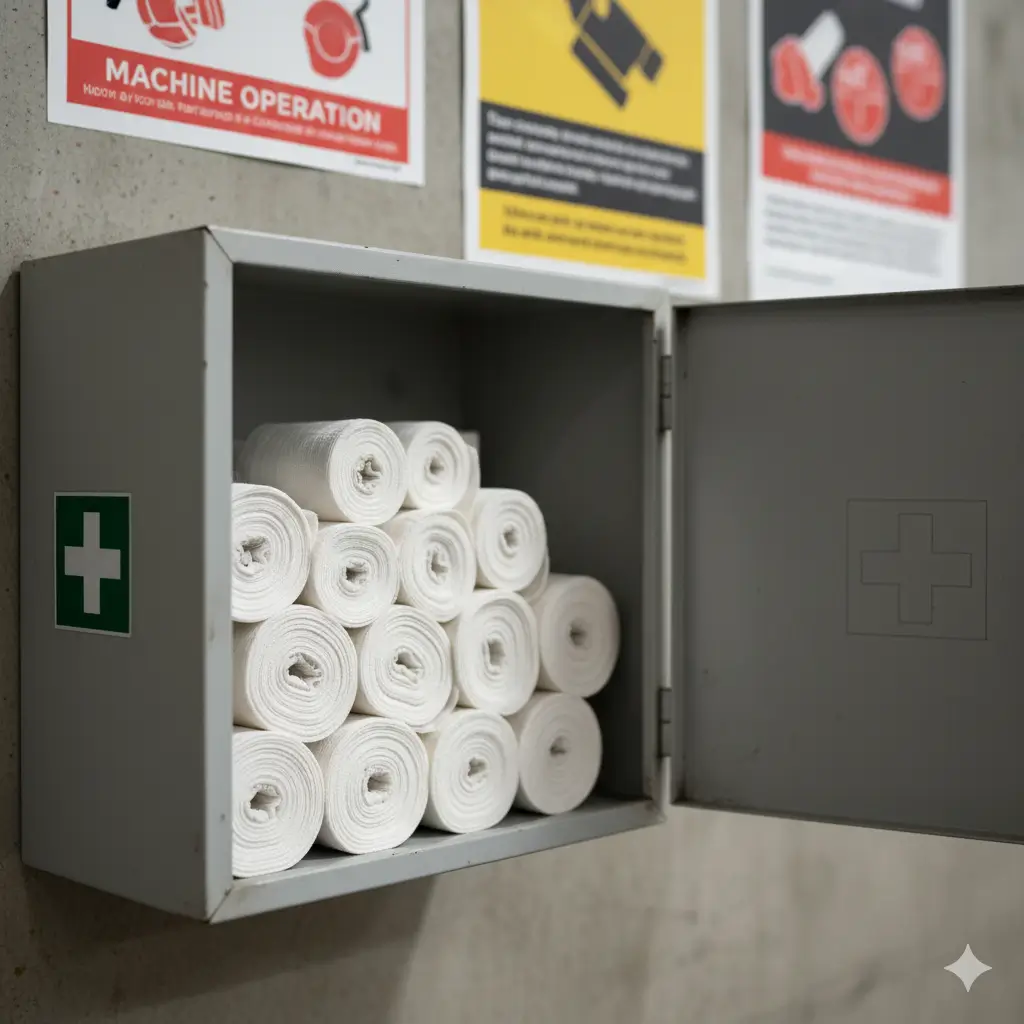
Bandages are critical in industrial settings because they protect wounds, reduce infection risks, and enable faster recovery. Manufacturers routinely stock standard types of bandages to cover a wide range of workplace injuries, from minor cuts to heavy bleeding.
Why Do Crepe (Gauze) Bandages Remain Industry Standard?
Crepe bandages, also called gauze bandages, are highly versatile, breathable, and suitable for wrapping wounds, sprains, or securing dressings. Their stretchable design makes them a staple in bandages supplies for factories and construction sites.
How Do Compression Bandages Support Industrial Injury Care?
Compression bandages apply controlled pressure to minimize swelling and control bleeding. They are essential in manufacturing environments where workers face risks of joint injuries or accidents that cause significant blood loss.
What Makes Adhesive (Strip) Bandages Popular in Workplace Kits?
Adhesive strips are the most recognizable type of bandage and are used for small cuts and abrasions. Their convenience, quick application, and hygienic packaging make them indispensable in every industrial first aid kit.
Which Specialized Bandages Are Designed for Different Work Environments?
Specialized bandages meet the needs of workers exposed to higher risks, offering targeted protection and comfort. Manufacturers select these bandages to ensure compliance and minimize workplace disruption after injuries.
How Do Hydrocolloid & Medicated Bandages Aid Faster Recovery?
Hydrocolloid bandages speed up healing by maintaining a moist environment, while medicated versions contain antiseptics or antibiotics to reduce infection risks. These are increasingly used in industrial kits where wound management is critical.
Why Are Tubular (Elastic) Bandages Ideal for Joint Protection?
Tubular bandages provide uniform support around joints such as knees, wrists, and elbows. They are particularly valued in manufacturing, where repetitive strain injuries and joint sprains are common among workers.
What Role Do Triangular / Sling Bandages Play in Factories?
Triangular bandages are multipurpose and can be used as slings, head wraps, or temporary tourniquets. Their adaptability makes them essential for large workplaces where injury scenarios vary widely.
Can Cohesive (Self-Adhering) Bandages Reduce Waste and Cost?
Cohesive bandages stick only to themselves, not to skin or hair. This reduces discomfort for workers and waste for manufacturers, making them a cost-effective and eco-friendly option.
How Do Innovative Bandage Types Enhance Safety in Manufacturing?
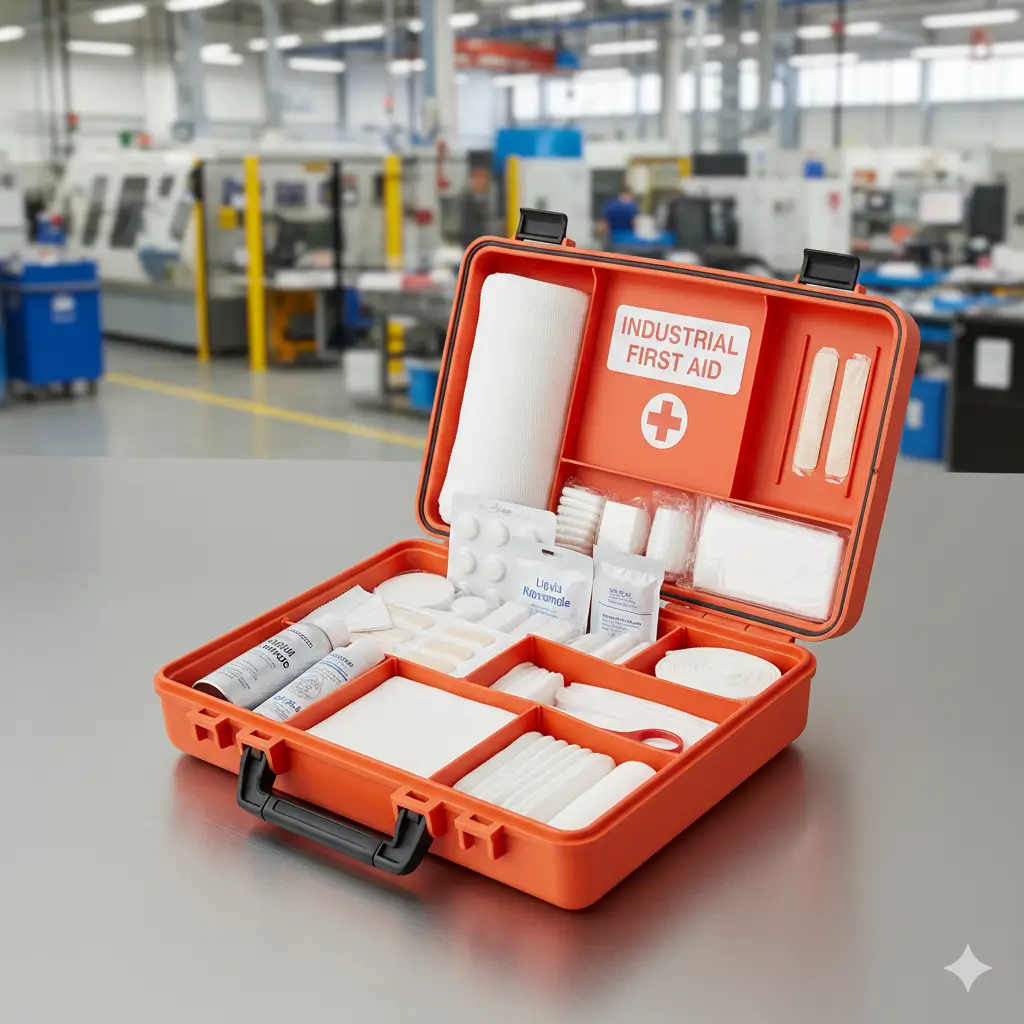
Advancements in medical supplies have introduced innovative bandages designed for specific environments, helping manufacturers reduce downtime and provide modern safety solutions.
What Benefits Do Liquid / Polymer Bandages Offer in High-Moisture Settings?
Liquid bandages form a waterproof layer that seals wounds instantly, making them ideal for workers in food processing, marine, or chemical industries where moisture is unavoidable.
Which Shaped Bandages (Knuckle, Fingertip) Are Most Practical for Workers?
Shaped bandages fit awkward injury spots such as knuckles and fingertips. For manufacturers, stocking these ensures employees can continue tasks without frequent replacements.
Why Are Transparent & Waterproof Bandages a Smart Investment?
Transparent and waterproof bandages allow workers to monitor wound healing without removal, while also withstanding sweat and moisture. These reduce replacement frequency and improve productivity.
What Bandage Categories Do Buyers Evaluate Before Bulk Procurement?
Purchasing managers consider multiple factors before stocking bandages, from material durability to regulatory compliance. The right mix ensures both cost efficiency and workplace safety.
How Do Fabric, Foam, and Plastic Bandages Differ in Durability?
Fabric bandages are flexible and breathable, foam offers cushioning, while plastic provides water resistance. Manufacturers select based on the nature of their work environment and injury risks.
Which Impregnated or Medicated Bandages Improve Workplace Safety?
Impregnated bandages contain antiseptics or healing agents, providing added protection. These are critical in manufacturing where minor wounds can escalate if untreated.
What Specialty Casting & Immobilisation Bandages Are Required for Heavy Injuries?
Plaster or fiberglass casting bandages are necessary in environments prone to fractures. Manufacturers ensure these are available in industrial first aid kit supplies for serious accidents.
How Can Manufacturers Choose the Right Mix of Bandages?
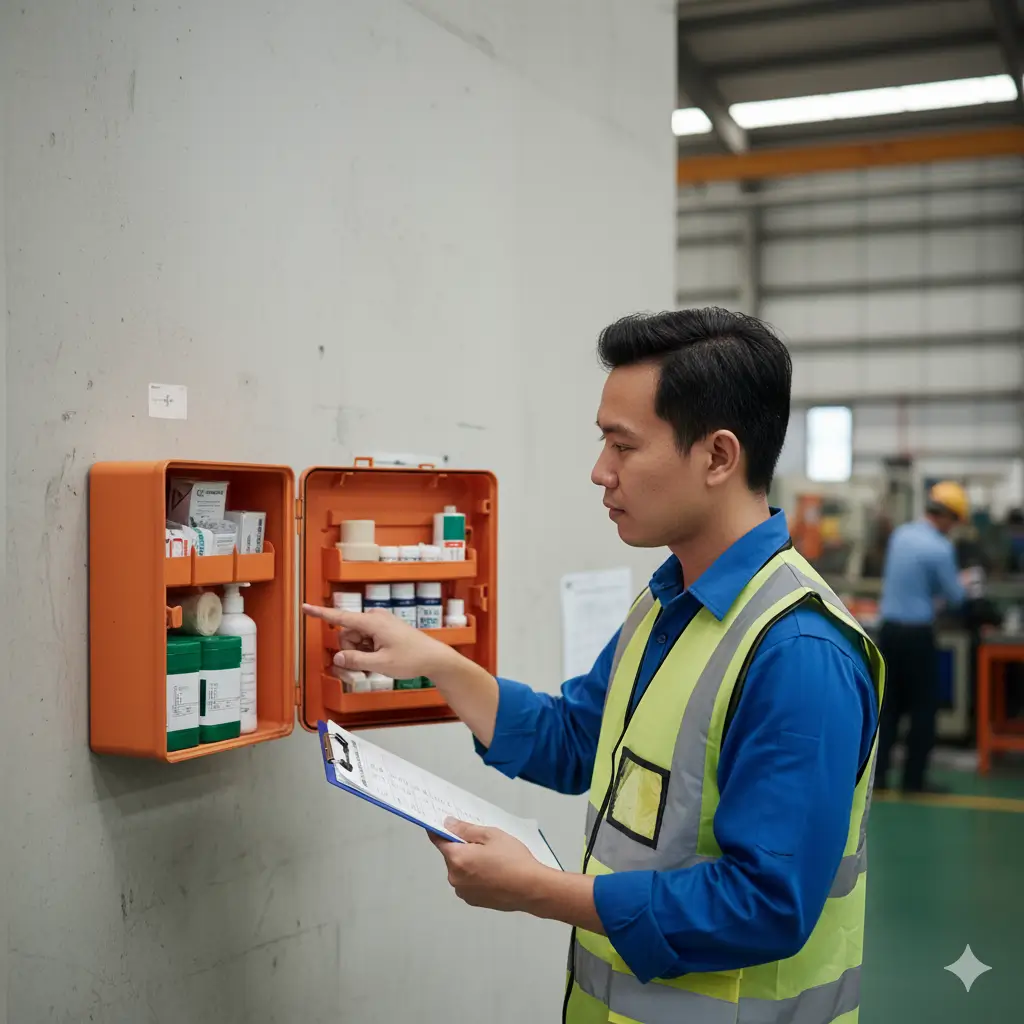
Effective selection ensures compliance, worker safety, and financial efficiency. Decision-makers balance practical needs with industry standards when stocking bandages.
What Criteria Should Influence Bulk Bandage Purchases?
Key factors include wound type coverage, ease of use, storage life, cost per unit, and employee comfort. Manufacturers who review these criteria avoid shortages or wastage.
How Do Safety Regulations Shape Bandage Procurement Decisions?
Malaysian occupational safety laws require employers to provide certified first aid kits. Stocking a complete range of bandages ensures compliance and avoids penalties during inspections.
Where Can Manufacturers Source Certified Industrial Bandages?
Certified suppliers such as Bandages distributors and specialized first aid providers offer quality-tested products that meet both local and international standards.
Bandages are more than simple medical supplies; they are essential safety investments that every manufacturer must prioritize. Stocking the right mix of 12 bandage types ensures workplace readiness, regulatory compliance, and rapid response to injuries.
For Malaysian businesses, these decisions not only safeguard workers but also reinforce trust and long-term operational stability.
Is your facility equipped with the right bandages and industrial first aid essentials? Now is the time to review your workplace kits and upgrade with certified supplies.
By choosing reliable industrial first aid kit supplies, Malaysian manufacturers can protect employees, comply with safety laws, and strengthen business resilience. Take action today—because a safe workforce is the foundation of a successful enterprise.
FAQ
Q1: Why are bandages important in manufacturing workplaces?
A: Bandages are crucial for controlling bleeding, protecting wounds, and stabilizing injuries. Manufacturers rely on them to comply with safety standards and ensure quick responses to workplace accidents.
Q2: Which types of bandages should every industrial first aid kit include?
A: Essential bandages include gauze, adhesive strips, compression, triangular, tubular, cohesive, and waterproof varieties. Each serves a unique purpose in addressing different types of workplace injuries.
Q3: How often should manufacturers replace stored bandages?
A: Bandages should be replaced before expiry dates or when packaging is damaged. Regular audits ensure first aid kits remain effective and compliant with occupational health regulations.
Q4: Can innovative bandages like hydrocolloid or liquid bandages benefit factories?
A: Yes. Innovative bandages provide faster healing, better infection control, and durability in challenging environments, making them increasingly valuable in modern industrial settings.
Q5: Where can Malaysian businesses source certified bandages and first aid supplies?
A: Companies can source certified products through trusted suppliers specializing in bandages and comprehensive workplace first aid kits. This ensures compliance with Malaysian safety standards and peace of mind.


